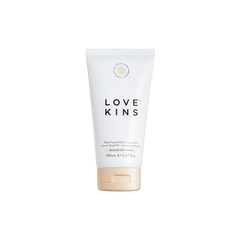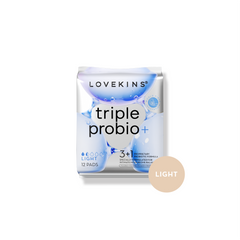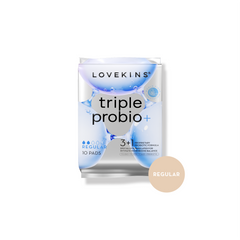Written by Lauren Brenton (@OneMamaMidwife), Clinical Midwifery Specialist (CMS)
A caesarean section, sometimes referred to as a C-Section, is a surgical procedure where a cut is made in the mother’s abdominal wall and uterus to deliver a baby.
There are many reasons why a c-section may be performed, some of these include:
- Previous caesarean section
- Twins or multiples
- Placenta previa (placenta partially or completely covering the cervix)
- Unfavourable fetal position (breech, transverse, or oblique positioning)
- Caesarean in labour due to lack of progress or fetal distress
Every hospital has different policies surrounding caesarean section and therefore the process is slightly different everywhere. Prior to your caesarean section you will need to have fasted for at least 6-8 hours, meaning no food or water. You will need to have an obstetrician discuss with you the risks and benefits of your caesarean section, so that you are informed, and you will need to sign a written consent form. It is important that you ask as many questions as you can so that you are aware of what will be happening and why. Most hospitals will require you to shower the morning of the caesarean in a surgical scrub to help prevent infections. Your pubic hair needs to be shaved or waxed prior to the caesarean section to reduce the risk of infection, it is important you ask your hospital if they prefer this be done before your admission or if they prefer to do it in your admission. You need to have all your jewellery removed prior to the caesarean section however, it is no longer a requirement to remove nail polish prior to your caesarean section, so it is your choice whether you keep it or remove it.

Once admitted to hospital, you will have blood tests taken and checked into the hospital with a series of preoperative questions. You will be dressed into a hospital gown and given some compression stockings for your legs called TEDs, these work to reduce the risk of blood clots from the surgery. Your midwife will then have a listen to your baby’s heart rate using a doppler to ensure there are no concerns prior to the surgery. Once this is done, you will be taken into an anaesthetic bay, some hospitals will allow your partner to join you while others won’t, check with your hospital on their policy. In the anaesthetic bay you will meet your Anaesthetist (if you haven’t already), your observations will be taken and a cannula will be inserted into your hand (ask for this to be put into your non dominant hand, to make breastfeeding easier after birth). You will then be taken into the operating theatre and your spinal anaesthetic administered, this will be tested regularly, and the surgery will not be started until the anaesthetic is completely effective. You will be lying on the operating table with a slight tilt to the left so that you are not flat on your back, and you will have a blue drape up from your chest so that you do not see the surgery. Your partner will usually be brought into the operating theatre at this time and the surgery will commence, after approximately 10-15 minutes your baby will be lifted through the cut in your abdomen and given to you for cuddles in theatre. Unfortunately, it is not standard in every hospital to have skin to skin with your baby in the operating theatre and some hospitals even separate mother and baby after the caesarean when the mother goes to recovery. Research tells us that skin to skin in theatre regulates baby’s temperature, heart rate, breathing rate and improves breastfeeding success. If it is important for you to have skin to skin in theatre, it is essential that prior to your caesarean section you talk to your hospital to find out their policy and advocate for yourself. Remember this is your birth and the healthcare team should be catering to your wishes wherever possible.
I have compiled my favourite caesarean section recovery tips to make your recovery easier!
My top c-section do's & don'ts recovery tips:
1. Early mobilisation
Mobilising gently within 12 hours of your surgery can improve your pain, reduce your length of time in hospital, reduce your risk of blood clots, improve insulin levels, and improve the transport of oxygen throughout your body. For you to mobilise it is important to have your pain well controlled. Start with a gentle supported walk to the shower and slowly increase your amount of movement each day as you feel comfortable.
2. Don’t ‘wait and see’ when it comes to pain relief
A caesarean section is a major surgery, and this means that pain relief is a vital part of healing. Pain after a caesarean section should be pictured like a snowball. If you wait and see it will more than likely get worse and be much harder to get on top of. So, this means that when you start to feel pain it is important to take pain relief so that you stay on top of it, can continue mobilising effectively and caring for your baby.
3. Don’t push yourself
It is important that you listen to your body, if it is telling you to rest then that is the best thing for you to do. This means prioritising your naps/rest periods and saying no to visitors if you don’t feel up to it. Furthermore, after a caesarean section it is recommended that you do not lift anything heavier than your baby (this includes any older children). And that you do not exercise for around 6 weeks and that you do not drive for approximately 6 weeks (dependent on your obstetrician and car insurance company requirements). Therefore, it is essential to ask for help from family and friends with household tasks like cleaning, shopping, washing, or cooking. Asking for help with older children and having support to be your personal Uber. This means that you will give your body the time it needs to rest and recover properly and reduce your risk of complications.

Go easy on yourself, your body has gone through a major surgery, you are now sleep deprived and caring for your baby – you should be so proud of yourself!
Always consult your healthcare professional before undertaking any movement or activity.













